A bill requiring underride guards on certain new trucks and trailers would bring reassurance to families who have lost loved ones in underride accidents, but trucking groups have voiced opposition, citing safety hazards for truck drivers and the industry.
The term “underride” refers to an accident in which one vehicle partially slides underneath another, particularly when a passenger vehicle slides beneath a large truck.
U.S. Sens. Kirsten Gillibrand (D-N.Y.) and Marco Rubio (R-Fla.) reintroduced the Stop Underrides Act to the Senate on March 8.
The Stop Underrides Act would strengthen requirements for rear underride guards and add the requirement for single unit trucks. Specifically, the bill would require the installation of rear, side and front underride guards on trailers and tractor-trailers weighing more than 10,000 pounds, as well as on single-unit trucks that have a carriage more than 22 inches above the ground and weigh more than 10,000 pounds. Under current law, underride guards are not required on the sides or front of trucks. Underride guards are already required on the back of a trailer.
If the bill is passed, a committee would be formed to monitor the underride rulemaking process. Identical legislation has been referred to the U.S. House of Representatives by Reps. Steve Cohen (D-Tenn.) and Mark DeSaulnier (D-Ca.). The bipartisan Stop Underrides Act is being referred to the Senate Commerce, Science and Transportation Committee and the House Committee on Transportation and Infrastructure.
This is the third time the bill has been introduced. Previous versions of the bill, which proposed retrofitting existing trailers and trucks, never got out of the committee. The bill was drafted by Marianne Karth and Lois Durso Hawkins, who started advocating for underride protection after their children died following separate underride crashes.
Karth and her children were traveling on Interstate 20 in Georgia on May 4, 2013, when a semi-truck hit the back of their vehicle, spinning the car around and forcing it underneath a second semi-truck. Karth and her son survived, but her daughters, AnnaLeah and Mary, were killed.
“I learned that it wasn’t the crash that killed them, because I was in the crash and sitting in the front seat,” Karth said in a Truck Safety News Conference on Monday, March 8. “We survived because our part of the car did not go under the truck. It was the underride.”
Hawkins, who lost her daughter, Roya, in a 2013 underride collision, agrees that it was the underride rather than the collision that led to her daughter’s death.
“If [underride protection] had happened, I wouldn’t be here today,” Hawkins said. “Many other families would not have suffered that loss either.”
The distance from the undercarriage of a semi-truck and the pavement is 41 inches, while the height from a car’s hood is about 33 inches, according to Karth.
“When there’s a collision, the car can easily slide under,” she said.
The March 8 news conference highlighted other deaths and injuries associated with underrides.
Eric Hein lost his son, Riley, to an underride collision on Nov. 13, 2015 in New Mexico. Hein challenged the trucking company in court and was awarded $42 million as a result of negligence.
“They were aware that side underride guards were not on the semi-trailer that they had produced,” Hein said. “The lack of underride guards contributed to Riley’s death.”
Roy Crawford, a crash reconstruction specialist, lost his son, Guy, in an underride crash.
“Even with a really good underride guard, the main problem we need to work on is avoiding these crashes in the first place,” Crawford said. “Vehicles should not be stopped or traveling slowly on high-speed highways. They should be conspicuous enough that people can see them in time. Even with a good underride guard, if you hit it at a high enough speed and it works, you can still be killed because the human body can only take so much of an impact.”
The Insurance Institute for Highway Safety (IIHS), a nonprofit advocating to reduce motor vehicle crashes, has conducted crash tests to understand the impact of underride guards on a vehicle. The result, according to a video shown during the news conference, is that underride guards can help prevent severe injuries.
However, groups such as the American Trucking Associations (ATA) and the Owner-Operator Independent Driving Association (OOIDA), are against the bill moving forward.
ATA released a letter of opposition to the Senate and House Committees on Thursday, March 11.
“ATA has raised strong concerns about the Stop Underrides Act over the past few years because the legislation promotes a solution that is neither data-driven nor proven to be effective in real-world highway settings,” wrote Daniel Horvath, vice president of safety policy for ATA. “While we remain committed to the goal of zero fatalities on our nation’s highways, we cannot ignore the serious and potentially dangerous consequences of this legislation. The bill disregards proven safety technologies, such as automatic emergency braking, camera monitoring systems and active lane-keep assist.”
While Harvoth acknowledged that crash tests have proven underride guards will stop a vehicle traveling about 40 miles per hour, he pointed out that the tests have not been conducted in a realistic highway scenario.
The letter also notes that the Stop Underrides Act does not consider that the guards would be a safety concern for every trucking company and its operations and “engineering tradeoffs involving weight, strength and effectiveness of side guards.”
“We have yet to see evidence that side underride guards would be an effective safety countermeasure,” said Sean McNally, vice president of public affairs for ATA. “Until these devices can be shown to be reliable outside the test track, we believe Congress and regulators should focus on reducing crashes by addressing aggressive and distracted driving and investing in existing, proven safety technologies, including emerging connected vehicle technology.”
OOIDA expressed similar concerns about requiring underride guards on trucks.
“There is no real-world testing for typical navigation of trucks. Little consideration has been given to the impact underride guards would have on daily operations, such as the challenges of navigating grade crossings, high curbs, steep loading bays and other road conditions,” said Norita Taylor, public relations practitioner for OOIDA. “There is no front underride equipment currently on the market because the concept lacks any practicality.”
According to OOIDA, spread axle trailers are used to improve the distribution of weight on a truck and provide a safer loading option. Side underride guards could restrict the movements required, and potentially hinder the operational efficiency and safety.
In addition, side underride guards could limit a driver’s ability to inspect safety equipment located under the trailer.
“People usually think of van trailers when they think of trucking,” said Mike Matousek, manager of government affairs for OOIDA. “That’s what they see most often, but that’s not an accurate reflection of trucking. Think about side dumps, end dumps, tankers, car haulers, flat beds and dozens — or hundreds — of other specialized trailers that aren’t van trailers. It just doesn’t work on some of this.”
Like Taylor, Matousek noted that trucking involves high centering, and steep loading docks and high curbs could be hazardous for a truck with underride guards.
“We don’t enjoy opposing this,” Matousek said. “I’m a parent. Truckers are parents. But the reality is that some of it just won’t work for large segments of the industry. We take these issues very seriously and we will try to work through our concerns as much as possible, but sometimes there just isn’t a path forward.”
Hannah Butler is a lover of interesting people, places, photos and the written word. Butler is a former community newspaper reporter and editor for Arkansas Tech University’s student newspaper. Butler is currently finishing up her undergraduate print journalism degree and hopes to pursue higher education. Her work has been featured in at least nine different publications.








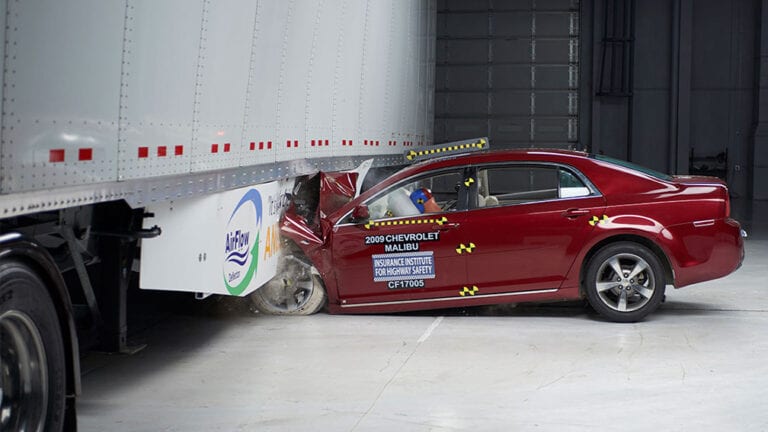

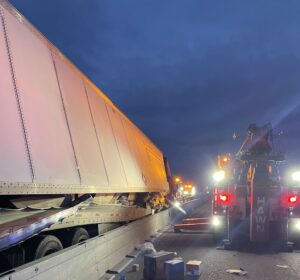
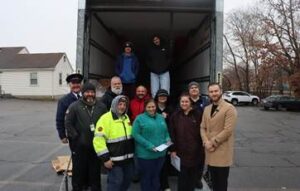

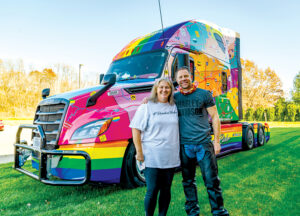
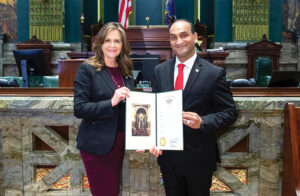

As an attorney who handles trucking crashes and other major transportation disasters, I am of the opinion that truckers are the worst offenders when it comes to creating deaths and carnage on the roadways. I have seen doctored log books, defective equipment, overweight trailers and a plethora of illegal acts by truckers. Most of the truckers have little or no training, are unfit physically and mentally for their work and care naught except making their schedule as quickly as possible with no regard for the safety of other vehicles on yhe road. Underride carriage would be a great starting place to safeguard other vehicles on the roadways. The fact that the trucking industry opposes legislation to make these underride carriages is a testament to their greed lobbying tactics and corruption where the almighty dollar trumps the safety and lives of others on the roadways.
Why don’t we just haul freight in hand drawn carts? That would be safer..or teach people not to drive under trailers..
“As an attorney…”
I stopped reading after that.
Why don’t we put all of these so called safety devices..make the truck net about 70,000 lbs..and only be able to haul 10,000 lb loads..
Nope they have lied to all of you! Over 500 will die by a loose trailer in 2021! Under 80 will die when you hit a truck. What is next????? Tree Under ride bars?
https://www.dangeroustrailers.org/the-side-underride-mis-truth–laws-are-passed-to-benefit-those-who-paid-for-the-law-to-be-passed–.html
Why don’t you implement driving around trucks and the hazards that can happen when you cut a truck off or ride in it’s blind spot the problem is that most people have no idea about the operation of trucks. Why don’t you include that on their driving exams I mean most of them don’t even need a license they drive while texting watching videos Facebooking putting on makeup etc. why do the truck drivers always have to pay the penalty.
We hold one steering wheel at a time, yes we have ass hole drivers out here, but not all of us are. We can’t help how the four wheelers drive. We do not cause all accidents. One size don’t fit all. Punish only the person who is doing this kind of stupid driving. It is raining out today , cars are cutting you off just to exit off, they come down ramps and think you should stop for them and if you don’t they will cut you off, and then when they get in front of you they hit their brakes. Why don’t we have cops out here controlling this mess. People don’t give a …. The government just want the money. It’s NEVER been about SAFETY, It’s the MONEY ONLY.
People want to blame drivers for hitting trucks, but I’ve seen trucks cut off other vehicles as well. It isn’t unusual to see a truck stuck in a stopped lane of traffic (e.g. during traffic) enter into a moving lane.
The current design of trucks overrides the extensive safety features built into modern automobiles and makes these features useless. As seen in various crash testing, it doesn’t take a particularly high rate of speed for these underride collisions to be deadly.